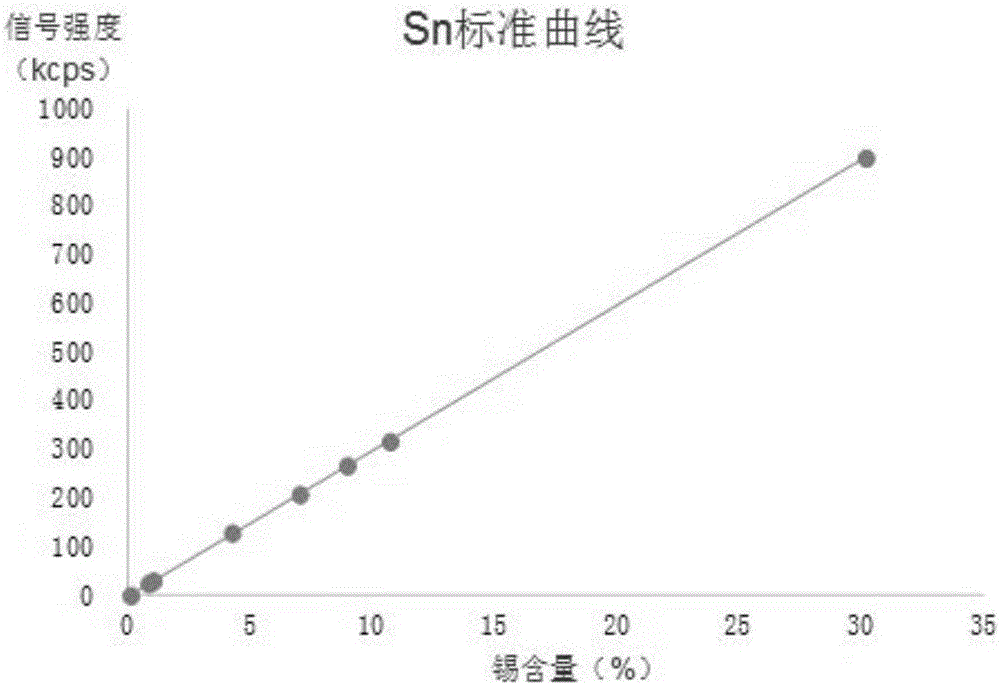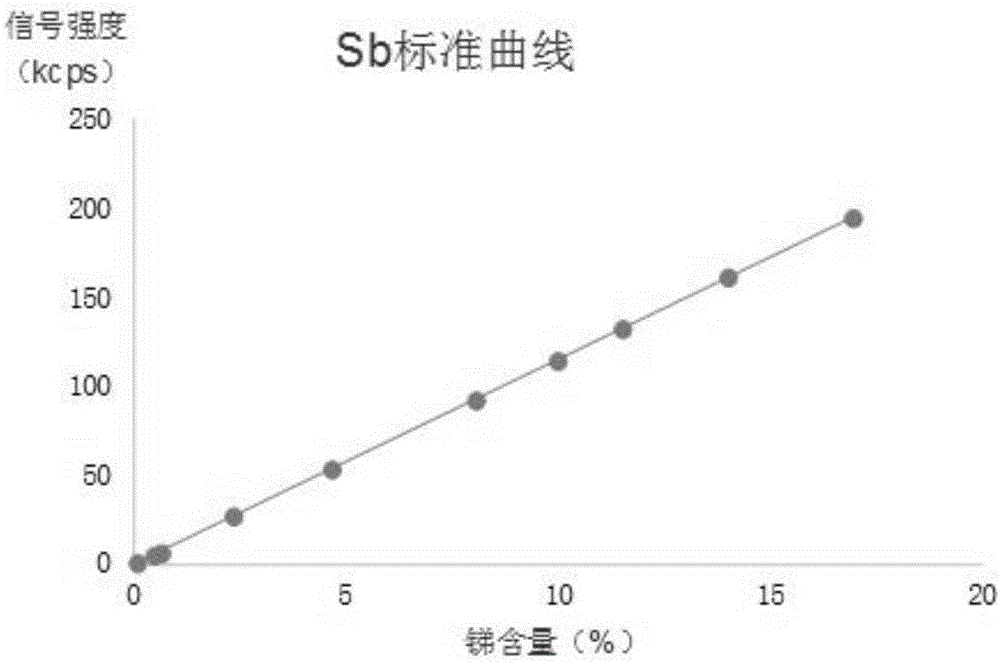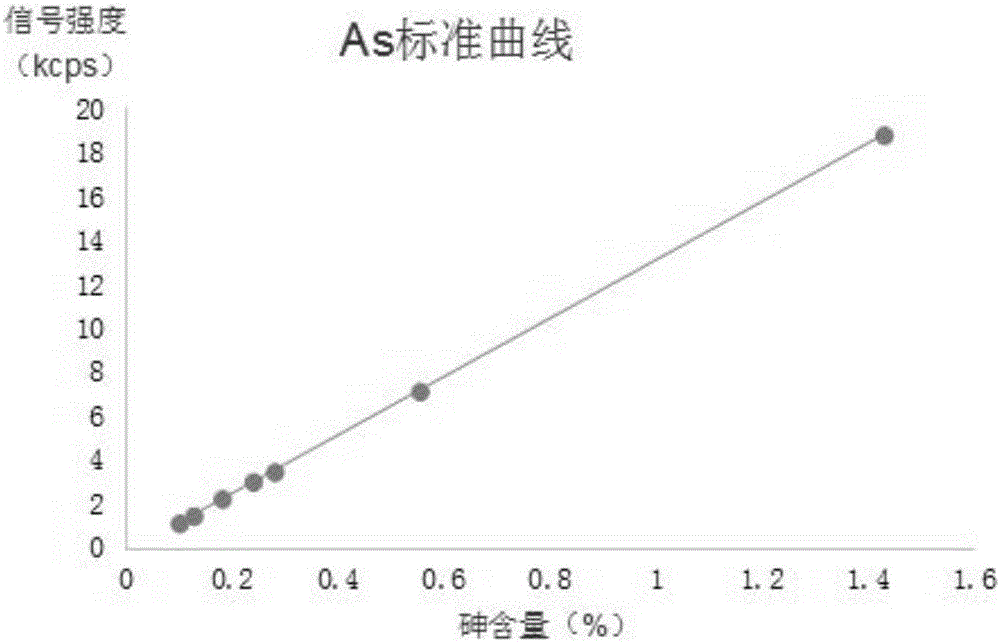Method for determining tin, antimony, arsenic, bismuth, copper, cadmium, calcium and silver in lead alloy through wavelength dispersion X-ray fluorescent spectrometry
A technique of fluorescence spectroscopy and wavelength dispersion, which is applied in the field of alloy composition analysis, achieves the effects of fast analysis, simple spectral lines, and improved work efficiency
- Summary
- Abstract
- Description
- Claims
- Application Information
AI Technical Summary
Problems solved by technology
Method used
Image
Examples
Embodiment 1
[0074] This embodiment is the determination of standard samples, which is used for selecting instruments and measuring working conditions and establishing a standard curve.
[0075] This embodiment includes the following steps:
[0076] 1) Select standard material for spectral analysis;
[0077] 2) prepare standard samples;
[0078] 3) Select instruments and measuring working conditions;
[0079] 4) Establish element standard curve;
[0080] 5) Optimize element detection limit and method precision;
[0081] 6) Measure the sample to be tested according to the determination method and standard curve established in steps 1) to 5).
[0082] In this embodiment, in step 1), the specific standard samples selected are: 84XBA1, 84XBA20, 85XPSb10, 85XPSb12, 85XPSb3, 85XPSb5, 86XPSS1, 86XPSS2, 86XPSS3, 86XPSS4, 91XS30PR2, 91XS63Bi1, 91XS63PR4, NF44-6, 84XPR823, 8 , 91XS50PR4, NF34-3, 82XPAG2.5R, 82XPAG3.5R, 84XBA21, 84XBA22, 83XPR7, 85XCADL, 85XCADH, the standard samples are importe...
Embodiment 2
[0127] The sample measured in this example is the No. 2 sample.
[0128] In this embodiment, the preparation method of the sample to be tested is as follows: smooth the surface of the standard sample, wipe the surface of the standard sample with absorbent cotton dipped in absolute ethanol, and store the standard sample in a Ф32mm sample cup.
[0129] According to the standard curve in Example 1, the method of the present invention is used to simultaneously test the content of each element in the sample of this example.
Embodiment 3
[0131] The sample measured in this embodiment is sample No. 3.
[0132] In this embodiment, the preparation method of the sample to be tested is as follows: smooth the surface of the standard sample, wipe the surface of the standard sample with absorbent cotton dipped in absolute ethanol, and store the standard sample in a Ф32mm sample cup.
[0133] According to the standard curve in Example 1, the method of the present invention is used to simultaneously test the content of each element in the sample of this example.
PUM
 Login to View More
Login to View More Abstract
Description
Claims
Application Information
 Login to View More
Login to View More - R&D
- Intellectual Property
- Life Sciences
- Materials
- Tech Scout
- Unparalleled Data Quality
- Higher Quality Content
- 60% Fewer Hallucinations
Browse by: Latest US Patents, China's latest patents, Technical Efficacy Thesaurus, Application Domain, Technology Topic, Popular Technical Reports.
© 2025 PatSnap. All rights reserved.Legal|Privacy policy|Modern Slavery Act Transparency Statement|Sitemap|About US| Contact US: help@patsnap.com



